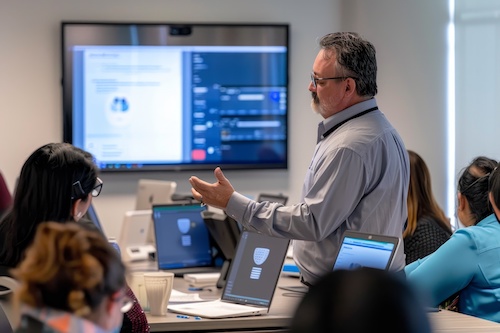Key points:
Education technology can significantly enhance teaching and learning in the classroom by providing innovative tools and resources that engage students and support diverse learning needs. By integrating digital tools, educators can create interactive lessons, facilitate personalized learning, and foster collaboration, ultimately leading to a more effective and enriching educational experience.
How can technology enhance teaching and learning in the classroom?
The use of technology in the classroom enhance teaching and learning can be achieved by providing innovative tools and resources that engage students and cater to diverse learning needs. Interactive platforms, such as smartboards and educational apps, make lessons more dynamic, capturing students’ attention and encouraging active participation.
Additionally, technology enables personalized learning through adaptive software that adjusts content based on individual student progress. This allows teachers to tailor instruction, ensuring that each learner receives appropriate support, whether they are struggling or excelling.
Collaboration is also facilitated by technology. Tools like Google Classroom and online discussion forums encourage teamwork, enabling students to work together on projects and share ideas seamlessly, regardless of their location.
Furthermore, technology provides access to a wealth of information and resources, allowing students to explore subjects in depth and fostering independent learning. Overall, technology transforms the classroom into a more engaging, efficient, and inclusive learning environment.
How does technology help a teacher in improving teaching?
Technology significantly aids teachers in improving their teaching effectiveness by providing tools that streamline lesson planning, enhance engagement, and facilitate personalized instruction. When we look at how teachers use technology in the classroom, learning management systems (LMS) allow educators to organize course materials, track student progress, and communicate efficiently with students and parents, saving time on administrative tasks.
Interactive tools, such as smartboards and educational software, enable teachers to create dynamic lessons that cater to different learning styles, keeping students engaged and motivated. Additionally, technology offers access to a wealth of online resources, including videos, simulations, and articles, which teachers can incorporate into their lessons to enrich content.
Furthermore, data analytics tools allow teachers to monitor student performance in real-time, identifying areas where learners may struggle and adjusting their instructional strategies accordingly. By leveraging these technologies, educators can foster a more collaborative and responsive classroom environment, ultimately leading to improved student outcomes and a more effective teaching approach.
How can learners benefit most in the use of technology?
How does technology enhance student learning? Learners can benefit immensely from the use of technology in several key ways. First, technology enhances engagement by making learning interactive and enjoyable. Tools like educational apps, videos, and simulations capture students’ attention and cater to various learning styles, helping them grasp complex concepts more easily.
Second, technology facilitates personalized learning. Adaptive learning platforms assess individual progress and adjust content accordingly, allowing students to learn at their own pace and receive targeted support tailored to their needs.
Third, technology provides access to a wealth of resources. Students can explore diverse materials online, from research articles to instructional videos, fostering independent learning and encouraging curiosity beyond the classroom.
Additionally, technology promotes collaboration. Tools like shared documents and discussion forums enable students to work together on projects, enhancing teamwork and communication skills.
Finally, technology helps develop digital literacy, equipping students with essential skills needed for future academic and career success. Overall, technology enriches the learning experience and prepares students for the challenges of the modern world.
How does technology benefit the classroom?
The use of technology in teaching and learning benefits the classroom in numerous impactful ways. First, it increases engagement by incorporating interactive tools such as videos, simulations, and gamified learning platforms, which capture students’ attention and make lessons more dynamic.
Second, technology facilitates personalized learning. Adaptive learning software can assess individual student performance and tailor content to their specific needs, allowing learners to progress at their own pace. This ensures that every student receives the appropriate level of challenge and support.
Third, technology provides access to vast resources. Students can explore online databases, research articles, and educational videos, broadening their understanding and encouraging independent learning.
Additionally, technology fosters collaboration. Digital tools enable students to work together on projects and share ideas easily, enhancing communication and teamwork skills.
Finally, integrating technology in the classroom promotes digital literacy, preparing students for a technology-driven world. Overall, technology enriches the educational environment, leading to improved student outcomes.
Conclusion
Technology enhances teaching and learning by making education more interactive, personalized, and accessible. By integrating digital tools, educators can engage students, tailor instruction to individual needs, and promote collaboration. This transformation prepares students for the future while enriching their overall educational experience.


